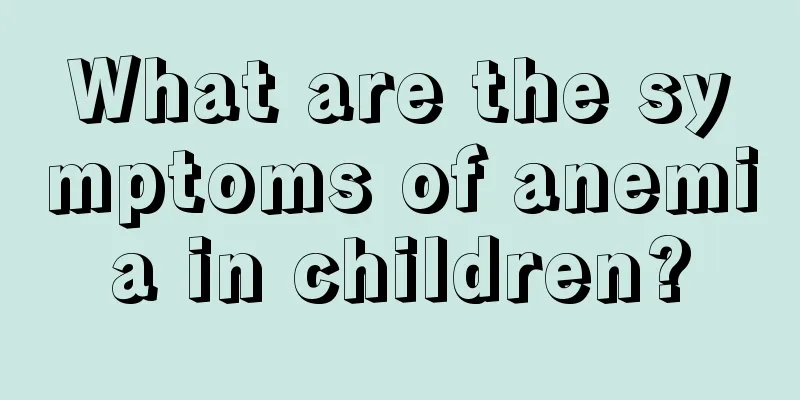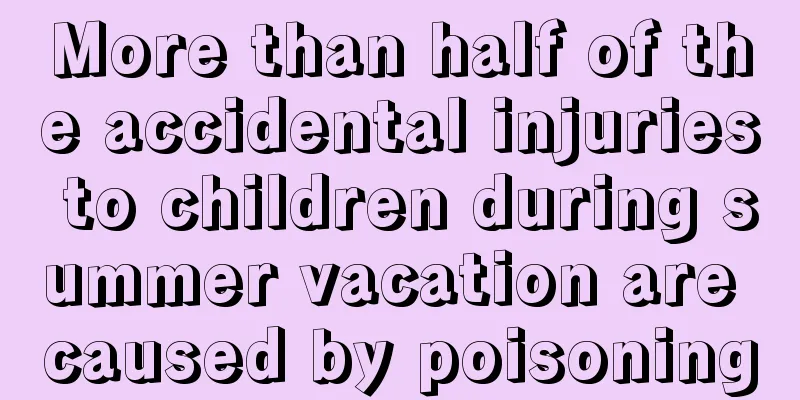What medicine is good for urinary tract infection in children?

|
Urinary tract infection in children is a relatively common urinary tract disease. Not only adults, but also children may suffer from urinary tract infection due to clothing or E. coli after birth. It will cause the baby to have a fever, or frequent urination, painful urination, etc., and it will also easily lead to redness and swelling of the private parts. You can take some anti-inflammatory drugs, and you can take them appropriately. You can consult a doctor before taking them. Medication 1. General treatment during the acute phase involves bed rest, drinking plenty of water, and eating easily digestible food containing sufficient calories and protein. 2. Anti-infection treatment (1) Drug selection: Bacterial urine infection is diagnosed based on the location of the urine infection and the pathogen: ① For upper urinary tract infection, use drugs with high blood and kidney concentrations, and for lower urinary tract infection, use drugs with high urine concentrations. ② Select drugs based on the examined pathogens and their drug sensitivity tests. ③Use low-toxic drugs as much as possible. Infants and young children should receive active and effective treatment. If they have vomiting or weakness, intravenous medication is recommended. Cephalosporin antibiotics, especially second- and third-generation cephalosporins, have better effects. Due to the increasing trend of ampicillin-resistant strains, they are being replaced by amoxicillin/clavulanate potassium (Amoxicillin). Aminoglycosides should be used with caution when given intravenously and should not be given for long periods of time. Quinolones have strong antibacterial effects, but should be used with caution in children under 7 years old. Sulfadimethoxazole (SMZ) and furantoin (furantoin) are suitable for the treatment of lower urinary tract infections and are generally used for 5 to 7 days. Antifungal drugs are available for urinary tract infections caused by fungi. Symptoms and signs There are three main manifestations, depending on age and location of urine infection: pyelonephritis, cystitis and asymptomatic bacteriuria. 1. The majority of cases of pyelonephritis occur in infants and young children, with symptoms of systemic infection and poisoning as the main manifestations. The patient often has a fever above 38.5°C, and may have convulsions or chills when the fever is high. In addition, the patient may also have general discomfort, lethargy, pale complexion, vomiting, nausea, and mild diarrhea. Older children complain of pain in the ribs or lower back, and percussion pain in the kidney area. Neonatal manifestations include sepsis, weight loss, feeding difficulties, jaundice, irritability, and fever or lack of temperature. 2. Cystitis mostly occurs in older girls, with symptoms such as frequent urination, urgency, difficulty urinating, incomplete urination, lower abdominal discomfort, pain in the suprapubic area, urinary incontinence, sometimes foul-smelling urine, and vulvar eczema. Cystitis does not usually cause fever. 3. Asymptomatic bacteriuria Asymptomatic bacteriuria refers to a positive urine culture in children without any clinical symptoms of infection. Almost all of them are girls, but if untreated they may develop into symptomatic urinary tract infections. Diet and health care Urinary tract infections are mostly caused by poor bladder gasification, which produces damp heat, or blood stasis. You can eat more foods that clear heat and dampness, such as winter melon, coix seed rice, poria cocos, and raw licorice, which can clear heat and can be used in combination. Strengthening physical exercise and preventing colds can reduce the chance of infection. Keep your spirits cheerful. Qi and blood flow smoothly. All diseases will stay away from you. |
<<: How to treat sinusitis in children
>>: What’s going on if my baby has red bumps on his nose?
Recommend
Symptoms of stomach flu in babies
Infants and young children need special care from...
Can children eat durian when they have a fever?
Everyone will encounter various diseases during t...
The child has a white peak
The healthy growth of children is very important....
Solutions for baby's breathing difficulties
Parents can understand and judge the baby's p...
What should I do if my child is anemic at one and a half weeks old?
Iron deficiency anemia is a disease that our babi...
Home care for infants with asthmatic bronchitis
It is said that children are the future and hope ...
What should I do if my child has poor hearing?
Every parent hopes that their children will grow ...
Baby's cold clear nasal discharge turns yellow
The most distressing thing for a family is when t...
Baby laundry soap
Babies have delicate skin and poor body resistanc...
What's the matter with the birthmark on the back of the baby's head?
What’s going on if my baby has a birthmark on the...
How to take care of the small red spots on your baby’s legs?
The presence of small red spots on the body is no...
How to grow taller quickly for children
Children are the treasures of every parent, and i...
Symptoms and care of infantile rash
Early childhood emergency rash is a relatively co...
What are the factors that cause tear duct obstruction in children?
Tear duct blockage often occurs in children. Tear...
How to treat children's precocious puberty?
Precocious puberty is the most common and most wo...









